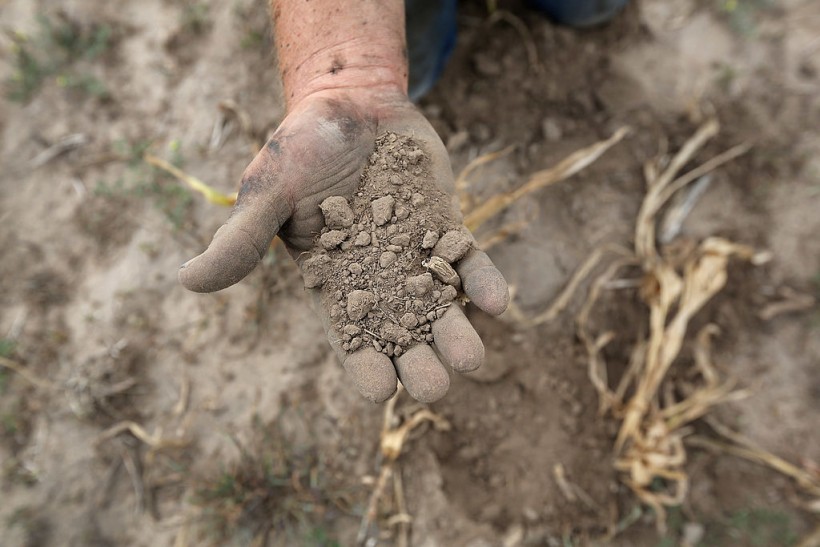Forests are among the most diverse and complex ecosystems on Earth, hosting millions of plant and animal species. But what determines the diversity of forests across the globe?
The answer may lie in the soil, where a microscopic world of fungi shapes the fate of plants. A new study reveals how soil fungi may help explain the global gradient in forest diversity, from the tropics to the poles.
A Global Phenomenon
 (Photo : John Moore/Getty Images)
(Photo : John Moore/Getty Images)

Recent studies have unveiled a remarkable discovery that could revolutionize our understanding of forest ecosystems.
Researchers have found that soil fungi, often overlooked, play a pivotal role in explaining the global gradient in forest diversity.
These microscopic organisms are not just decomposers; they are ecosystem engineers shaping the world beneath our feet.
The Equator-Poles Gradient Mystery
For years, scientists have been puzzled by the distinct variation in plant species from the equator to the poles. Tropical forests near the equator boast a rich biodiversity, while those closer to the poles exhibit less diversity.
The enigmatic pattern has found an unexpected ally for its explanation - soil fungi.
Also Read: Deadly Soil Fungi Causes Serious Lung Infection Uptick in 48 States, Study Shows
Detailed Insights on Forest Diversity
The research, published in Nature Communications Biology, underscores soil fungi's outsized role in influencing forest diversity on a global scale.
These microorganisms contribute significantly beyond human digestion and crop yields; they are integral to shaping ecological patterns observed across different latitudes.
In tropical forests near the equator, diverse fungal communities foster a rich variety of plant species. However, as one moves towards the poles, both fungal and plant diversity diminishes.
This revelation opens new avenues for understanding ecological dynamics and could potentially lead to innovative conservation strategies aimed at preserving delicate forest ecosystems.
According to the paper's lead author, Dr. Maria Rodriguez, a professor of ecology at the University of Maryland Baltimore County, the findings were surprising and exciting.
She said that they did not expect soil fungi to have such a strong influence on forest diversity at a global scale. She also said that they knew that soil fungi were important for plant nutrition and health, but they did not anticipate their impact on ecological patterns.
Dr. Rodriguez and her team analyzed data from more than 1,000 forest plots across six continents, covering a range of climatic zones.
They measured the diversity and composition of soil fungi and plant species in each plot, as well as other environmental factors such as soil pH, temperature, and precipitation.
They found that soil fungi explained more than 70% of the variation in plant diversity across the globe, surpassing other factors such as climate and soil properties.
They also discovered that different types of soil fungi had different effects on plant diversity. Ectomycorrhizal fungi, which form symbiotic relationships with plant roots, tended to reduce plant diversity, while arbuscular mycorrhizal fungi, which penetrate plant cells, tended to increase plant diversity.
The researchers hypothesized that ectomycorrhizal fungi create a more homogeneous soil environment, favoring certain plant species over others, while arbuscular mycorrhizal fungi create a more heterogeneous soil environment, allowing more plant species to coexist.
Dr. Rodriguez said that the study has important implications for forest conservation and management. She said that by understanding how soil fungi affect plant diversity, they can better predict how forest ecosystems will respond to global change, such as climate warming, land use, and invasive species. She also said that they can design more effective strategies to protect and restore forest biodiversity, by taking into account the diversity and function of soil fungi.
She added that the study also highlights the need for more research on soil fungi, which are still largely unknown and underappreciated.
She said that soil fungi are the hidden heroes of forest diversity, and they need to learn more about them and their interactions with plants and other organisms.
She said that they are a vital part of the Earth's life support system, and they should celebrate and protect them.
Related article: Agroforestry Systems in Tropical Cash Tree Plantations: A Study on Soil Fungal Communities and Carbon and Nitrogen Pools
© 2024 NatureWorldNews.com All rights reserved. Do not reproduce without permission.

![Tsunami Hazard Zones: New US Map Shows Places at Risk of Flooding and Tsunamis Amid Rising Sea Levels [NOAA]](https://1471793142.rsc.cdn77.org/data/thumbs/full/70325/280/157/50/40/tsunami-hazard-zones-new-us-map-shows-places-at-risk-of-flooding-and-tsunamis-amid-rising-sea-levels-noaa.jpg)



